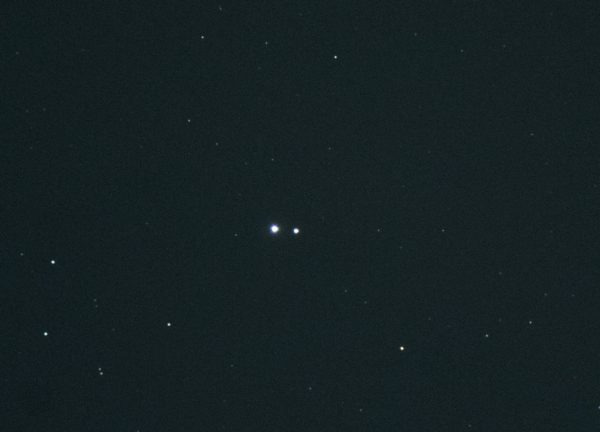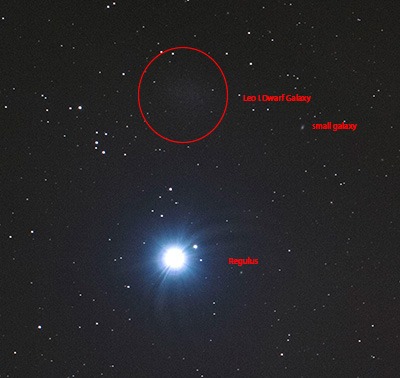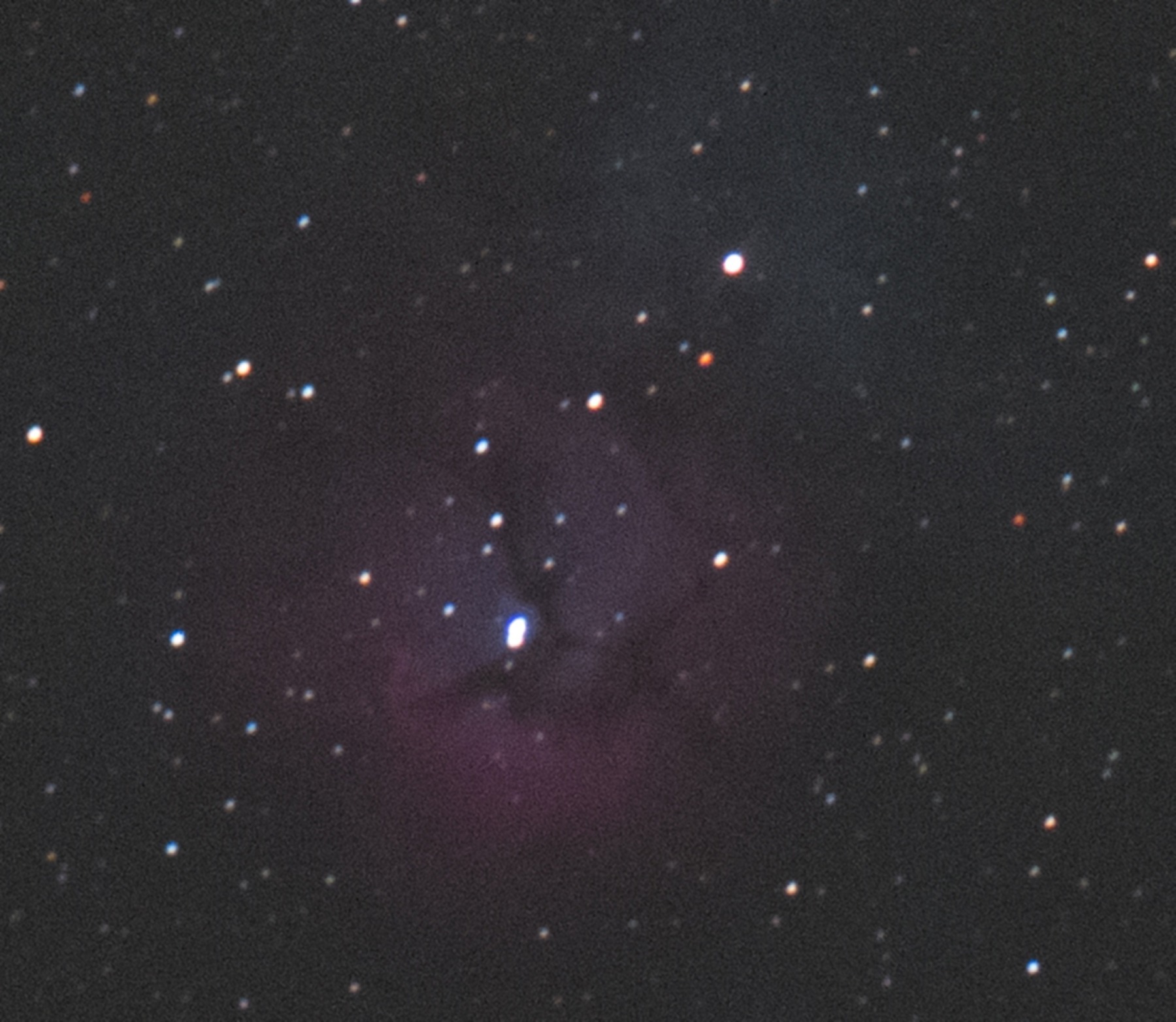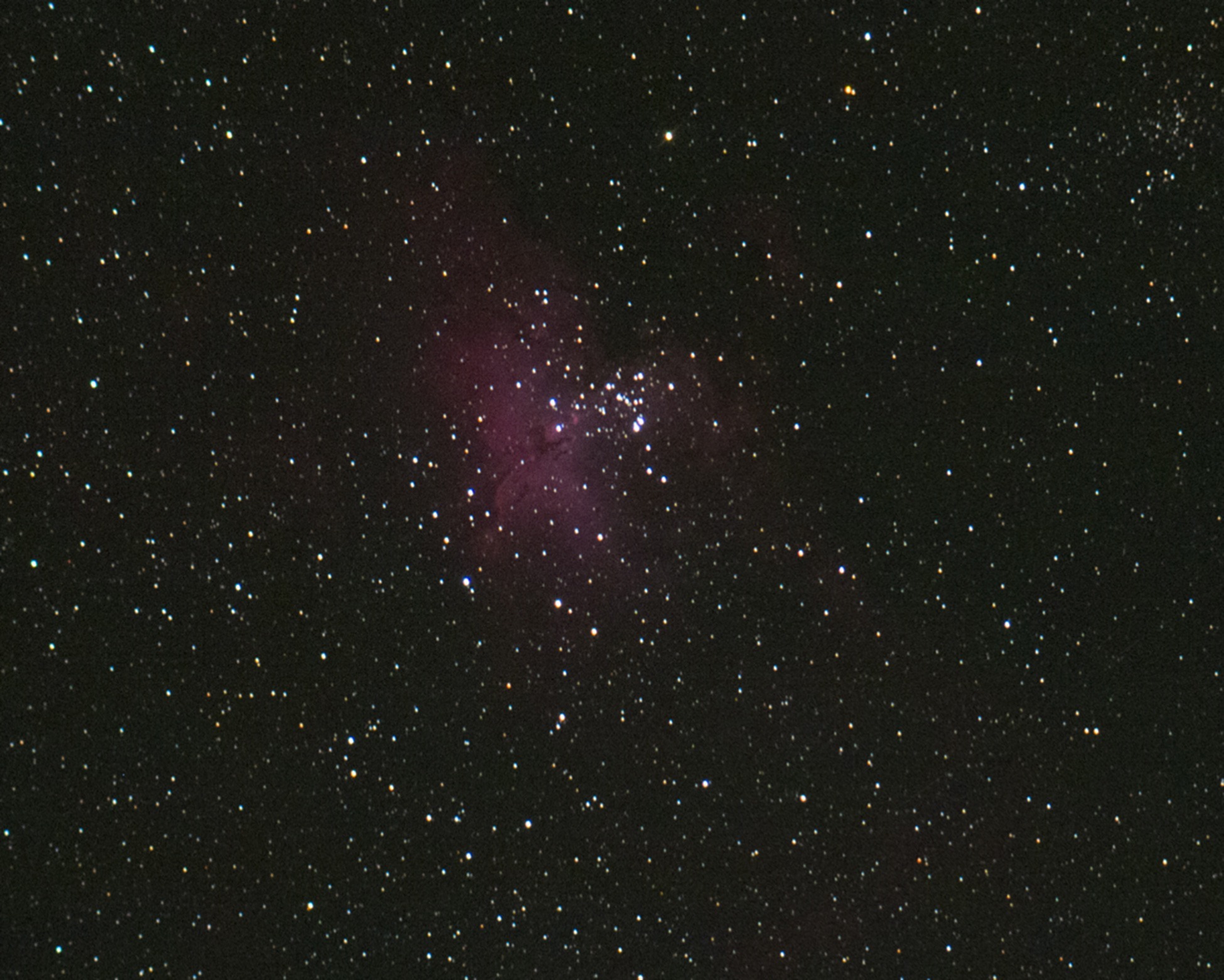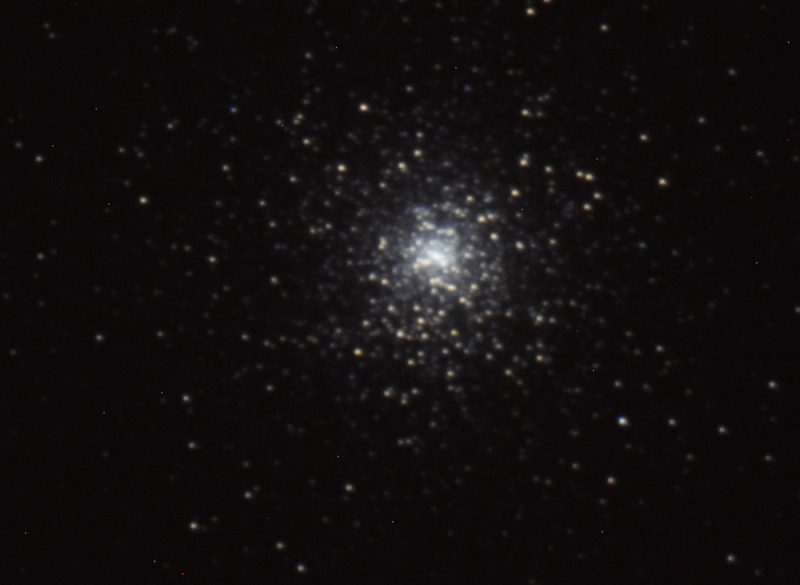Regulus and Leo I Dwarf Elliptical
Regulus and Leo 1 Dwarf Elliptical Regulus is the brightest object in the constellation Leo and one of the brightest stars in the night sky. It has the Bayer designation designated α Leonis, which is Latinized to Alpha Leonis, and …
M42/M43 Orion Nebula
M42/M43 Orion Nebula M42/M43 Orion Nebula is a diffuse nebula situated in the Milky Way, being south of Orion’s Belt in the constellation of Orion, and is known as the middle “star” in the “sword” of Orion. It is one …
M20 Trifid Nebula
M20 Trifid Nebula M20 Trifid Nebula is an H II region in the north-west of Sagittarius in a star-forming region in the Milky Way’s Scutum-Centaurus Arm. It was discovered by Charles Messier on June 5, 1764. Its name means ‘three-lobe’. …
M19 Globular Cluster
M19 Globular Cluster M19 or Messier 19 is a globular cluster in the constellation Ophiuchus. It was discovered by Charles Messier on June 5, 1764 and added to his catalogue of comet-like objects that same year. It was resolved into …
M18 Open Cluster
M18 Open Cluster M18 Open Cluster or Messier 18, also designated NGC 6613, is an open cluster of stars in the constellation Sagittarius. It was discovered by Charles Messier in 1764 and included in his list of comet-like objects. From …
M17 Omega nebula
M17 Omega Nebula M17 Omega Nebula, also known as the Swan Nebula, Checkmark Nebula, Lobster Nebula, and the Horseshoe Nebula is an H II region in the constellation Sagittarius. It was discovered by Philippe Loys de Chéseaux in 1745. Charles …
M16 Eagle Nebula
M16 Eagle Nebula M16 Eagle Nebula is a young open cluster of stars in the constellation Serpens, discovered by Jean-Philippe de Cheseaux in 1745–46. Another Take on this. Observation Log Information Log Index: 987 Session: 244 Date: 2014-09-13 Equipment: 110mmDoublet …
M15 Globular Cluster
M15 Globular Cluster Messier 15 or M15 is a globular cluster in the constellation Pegasus. It was discovered by Jean-Dominique Maraldi in 1746 and included in Charles Messier’s catalogue of comet-like objects in 1764. At an estimated 12.5±1.3 billion years …
